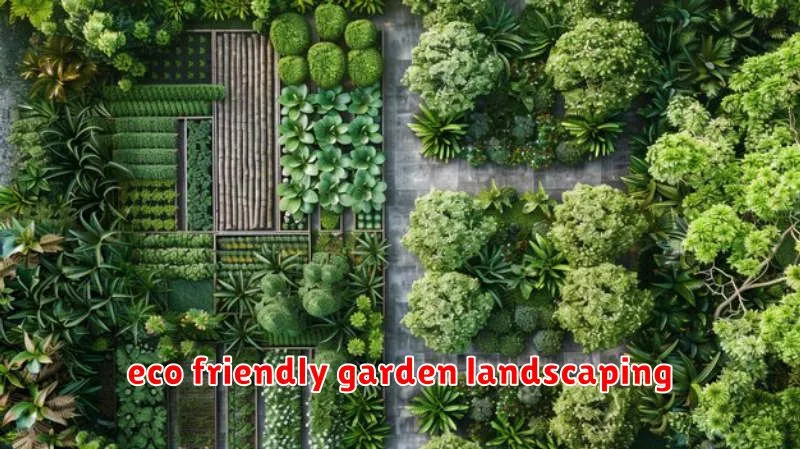Creating a beautiful and sustainable landscape is easier than you think! This article explores eco-friendly garden landscaping ideas perfect for environmentally conscious homeowners. We’ll delve into practical strategies for designing a thriving garden that minimizes environmental impact while maximizing aesthetic appeal. Discover sustainable landscaping techniques, including water-wise gardening, the selection of native plants, and the implementation of composting and recycling methods. Learn how to build a greener, more eco-friendly home through thoughtful garden design. Let’s cultivate a space that benefits both your home and the planet.
Solar-Powered Pathway Lights
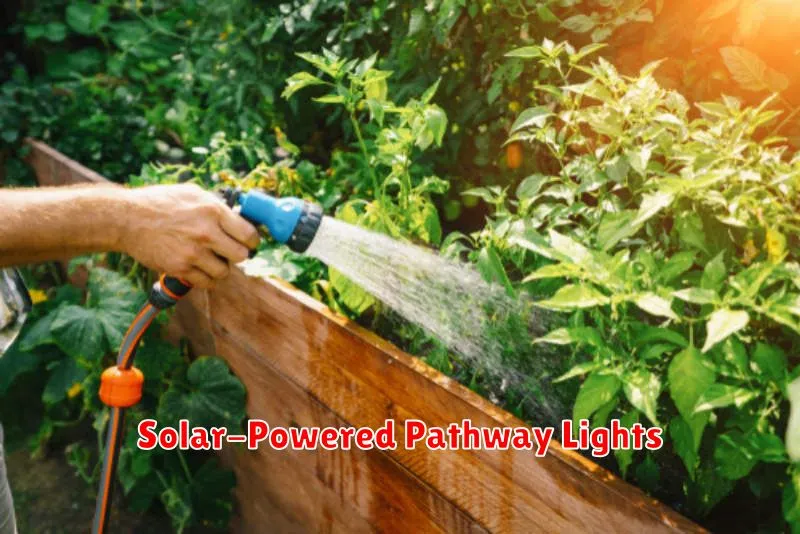
Solar-powered pathway lights offer a sustainable and aesthetically pleasing addition to any eco-friendly garden landscape. These lights harness the sun’s energy during the day, eliminating the need for grid electricity and reducing your carbon footprint. Their ease of installation and low maintenance requirements make them a practical choice for enhancing nighttime safety and ambiance.
Various styles and designs are available to complement different landscaping themes. Consider factors such as light intensity, the number of lights needed, and the overall aesthetic to choose lights that perfectly match your garden’s design. Opt for durable and weather-resistant models to ensure long-lasting performance and minimize environmental impact from frequent replacements.
By incorporating solar-powered pathway lights into your garden design, you contribute to a greener and more sustainable home environment. The subtle glow they provide enhances the beauty of your garden at night while promoting energy conservation and reducing your reliance on fossil fuels. This environmentally conscious choice aligns seamlessly with the goals of eco-friendly home landscaping.
Rainwater Collection Systems
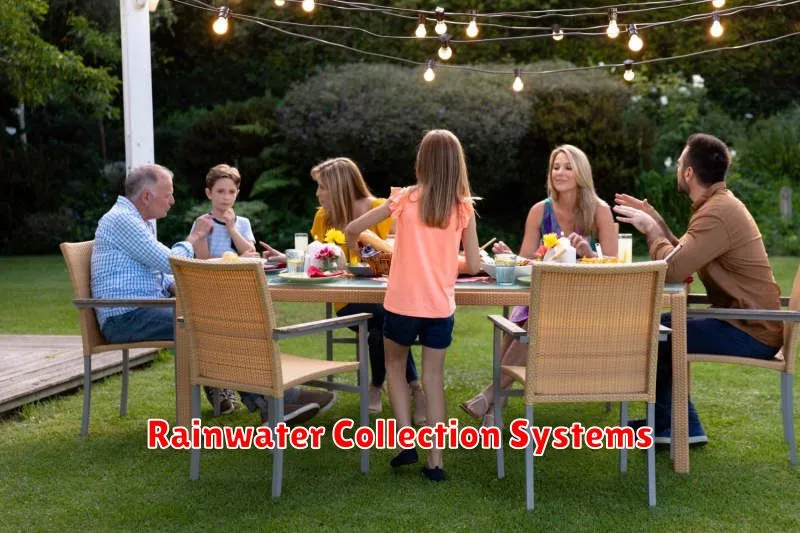
Implementing a rainwater collection system is a highly effective way to embrace eco-friendly gardening. These systems involve collecting rainwater from rooftops and other surfaces, storing it in tanks, and then using it to irrigate your garden. This significantly reduces reliance on municipal water supplies, conserving a precious resource and lowering your water bill.
The size and type of rainwater harvesting system you choose will depend on factors like the size of your roof, average rainfall, and the water needs of your garden. Simple systems can consist of a rain barrel connected to a downspout, while more elaborate systems might include underground tanks and sophisticated filtration.
Beyond the environmental benefits, using collected rainwater offers several advantages for your garden. Rainwater is naturally soft, lacking the chlorine and other chemicals often found in tap water, which can be harmful to plants. This makes it an ideal choice for watering, especially for sensitive plants or vegetables.
Vertical Vegetable Gardens
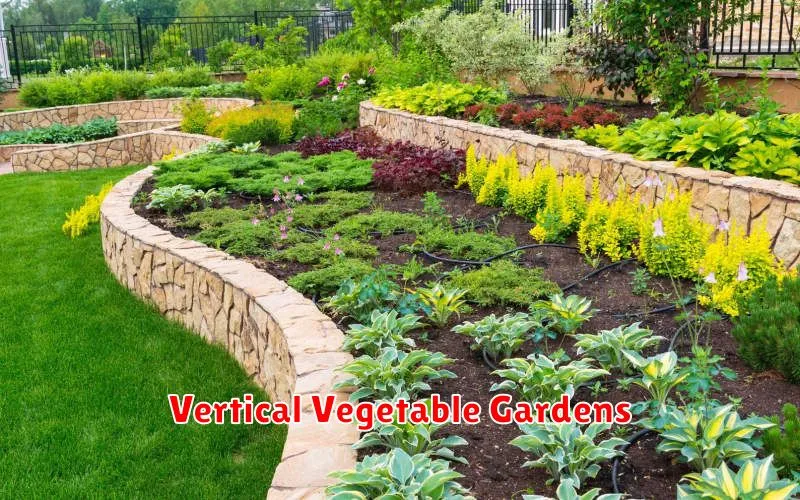
Vertical vegetable gardens offer a space-saving and aesthetically pleasing solution for eco-friendly homes. They maximize growing space in limited areas, such as patios, balconies, or even small backyards. Utilizing vertical structures like trellises, walls, or stacked planters allows for efficient use of land, minimizing the environmental impact associated with expansive horizontal gardens.
The benefits extend beyond space optimization. Vertical gardening often improves air circulation, reducing the risk of fungal diseases and pests. It also promotes better sunlight penetration to all plants, leading to healthier growth and higher yields. Furthermore, the reduced soil usage minimizes the need for water and fertilizers, contributing to sustainable gardening practices.
Consider using a variety of vertical gardening techniques, such as hanging baskets, vertical towers, or living walls. Choosing plants appropriate for vertical growth, such as climbing beans, tomatoes, and strawberries, is crucial for success. With careful planning and selection, a vertical vegetable garden can be a beautiful and productive addition to any eco-friendly home.
Eco-Friendly Garden Fences
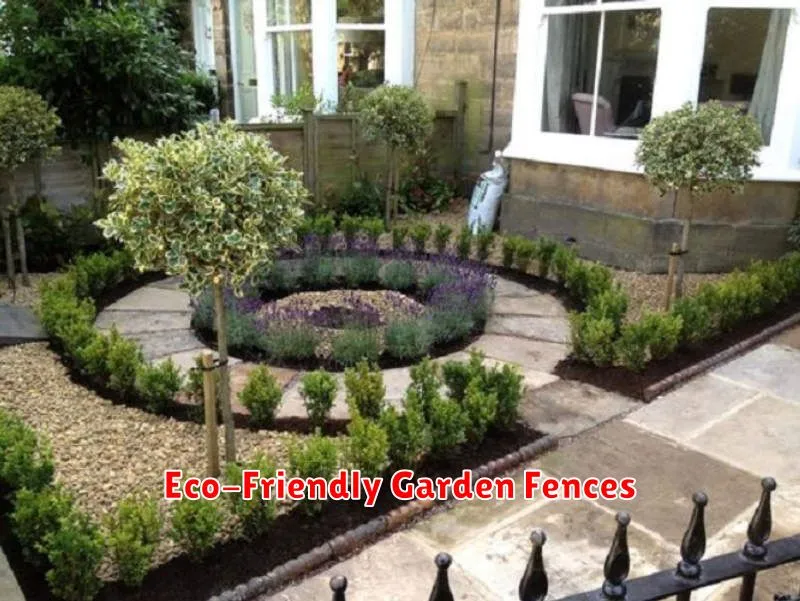
Creating an eco-friendly garden starts with choosing sustainable materials for your fence. Bamboo is an excellent option, offering strength and aesthetic appeal while being a rapidly renewable resource. Recycled plastic lumber provides a durable and low-maintenance alternative to traditional wood, diverting waste from landfills. Consider the lifespan and environmental impact of the material throughout its production and disposal.
Beyond the material, the design of your fence impacts its environmental footprint. Opt for designs that minimize the amount of material used while still providing adequate privacy and security. Living fences, utilizing fast-growing shrubs or vines, offer a beautiful, natural, and eco-friendly boundary that requires less material and provides habitat for wildlife. Choose plants native to your region to minimize water consumption and reduce the need for pesticides.
Finally, local sourcing of materials reduces transportation emissions, lessening the overall environmental impact of your fence. Support local businesses that prioritize sustainable practices and utilize reclaimed or recycled materials. By carefully considering material selection, design, and sourcing, you can create a beautiful and environmentally responsible garden fence that complements your eco-friendly home.
Compostable Planter Pots
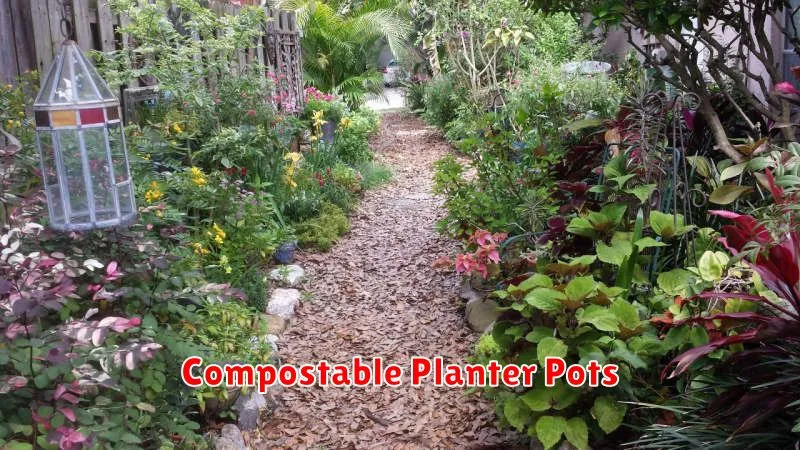
Compostable planter pots offer a sustainable alternative to traditional plastic pots. Made from materials like peat, coconut coir, or molded paper pulp, these pots decompose readily in your compost bin or garden, enriching the soil with beneficial nutrients. This eliminates the environmental burden of plastic waste accumulation from discarded pots.
Choosing compostable pots contributes significantly to reducing your carbon footprint. The production of plastic pots is energy-intensive and contributes to plastic pollution. By opting for biodegradable alternatives, you are supporting environmentally conscious practices and minimizing your impact on the planet.
Beyond environmental benefits, compostable planter pots often offer advantages for plant health. The porous nature of many compostable materials promotes better aeration and drainage, potentially resulting in healthier root systems and improved plant growth. This holistic approach benefits both your garden and the environment.
Water-Efficient Irrigation Systems
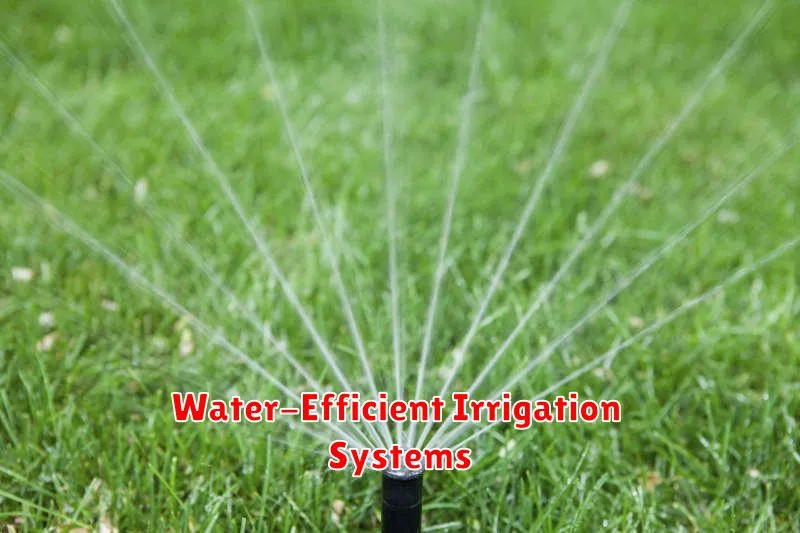
Implementing water-efficient irrigation systems is crucial for eco-friendly gardening. These systems prioritize responsible water usage, minimizing waste and conserving this precious resource. Options include drip irrigation, which delivers water directly to plant roots, reducing evaporation, and smart irrigation controllers, which utilize weather data to optimize watering schedules.
Drip irrigation systems are particularly effective at conserving water because they minimize water loss through evaporation and runoff. They also allow for more precise control over watering, ensuring plants receive the optimal amount of moisture. Furthermore, the use of moisture sensors in conjunction with these systems allows for even greater efficiency by only watering when necessary.
Investing in a water-efficient irrigation system is a significant step toward creating a sustainable and eco-friendly garden. Beyond water conservation, these systems also often lead to healthier plants due to more precise watering and reduced stress from overwatering or underwatering. The long-term benefits, both environmental and economic, make this a worthwhile investment for any eco-conscious homeowner.
Reclaimed Stone Pathways

Creating garden pathways with reclaimed stone offers a sustainable and aesthetically pleasing landscaping solution for eco-friendly homes. This approach minimizes environmental impact by repurposing existing materials, diverting them from landfills, and reducing the need for new stone extraction.
The diversity of reclaimed stone allows for unique pathway designs. Varied sizes, colors, and textures contribute to a visually interesting and naturally textured surface. This approach aligns perfectly with the principles of sustainable landscaping, emphasizing natural beauty and minimizing resource consumption.
Beyond the environmental benefits, reclaimed stone pathways offer durability and low maintenance. These pathways often require minimal upkeep, reducing the need for frequent repairs or replacements, further contributing to the overall sustainability of the landscaping design.
Native Plant Landscapes
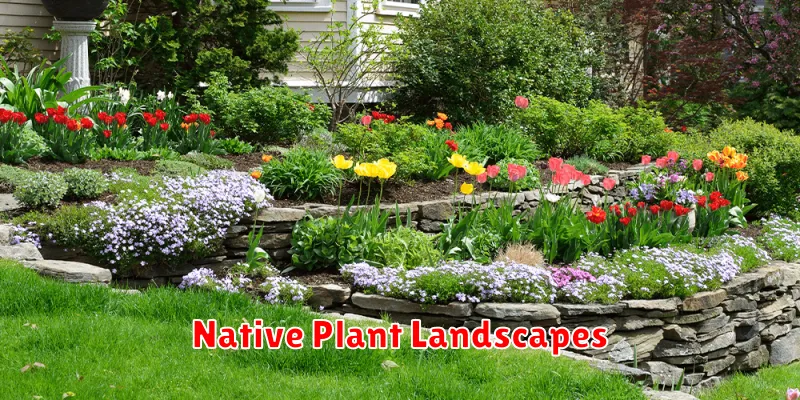
Incorporating native plants into your landscape design offers numerous ecological and aesthetic benefits. These plants are naturally adapted to your region’s climate and soil conditions, requiring less water and maintenance than non-native species. This reduces your reliance on pesticides and fertilizers, promoting a healthier environment for both your garden and surrounding ecosystems.
Choosing native plants supports local biodiversity. They provide vital habitat and food sources for native insects, birds, and other wildlife, creating a thriving and vibrant garden ecosystem. Furthermore, native plant landscapes often display a stunning array of colors, textures, and seasonal variations, offering a unique and beautiful aesthetic appeal that complements your eco-friendly home.
When planning your native plant landscape, consider the specific needs of your region. Research locally adapted species suitable for your soil type, sunlight exposure, and desired aesthetic. Consulting with local nurseries or horticultural experts can provide invaluable guidance in selecting the right plants and implementing a successful and sustainable design.
Biodegradable Mulch Beds
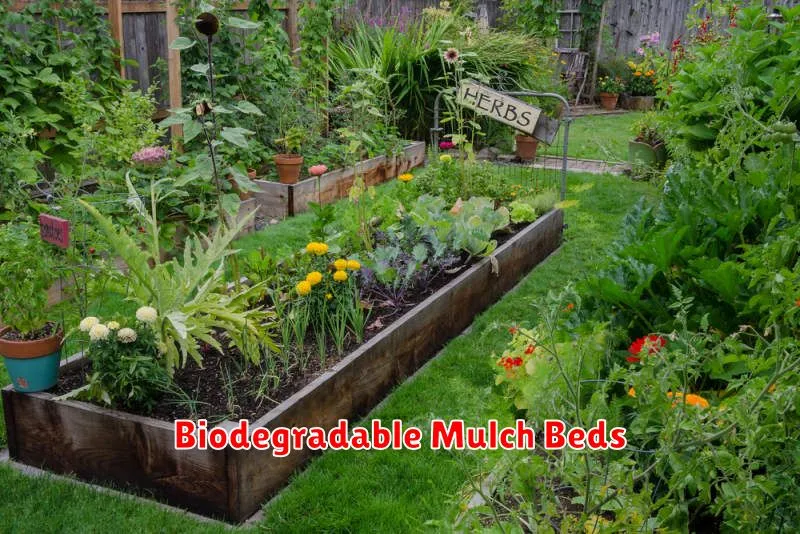
Creating biodegradable mulch beds is a simple yet effective way to enhance your garden’s eco-friendliness. These beds utilize organic materials like shredded leaves, wood chips, straw, or grass clippings, which naturally decompose, enriching the soil and improving its structure. This process reduces the need for synthetic fertilizers and pesticides, minimizing your environmental impact.
The benefits extend beyond soil health. Biodegradable mulch helps retain soil moisture, reducing the need for frequent watering and conserving water resources. It also suppresses weed growth, minimizing the need for herbicides. Properly maintained biodegradable mulch beds contribute to a healthier, more sustainable garden ecosystem.
When selecting materials, ensure they are free from disease or pests. Apply a sufficient layer (2-4 inches) to achieve optimal benefits. Regularly replenish the mulch as it decomposes to maintain its effectiveness. By embracing biodegradable mulch, you actively contribute to a more environmentally responsible landscaping approach.
Outdoor Solar Water Features
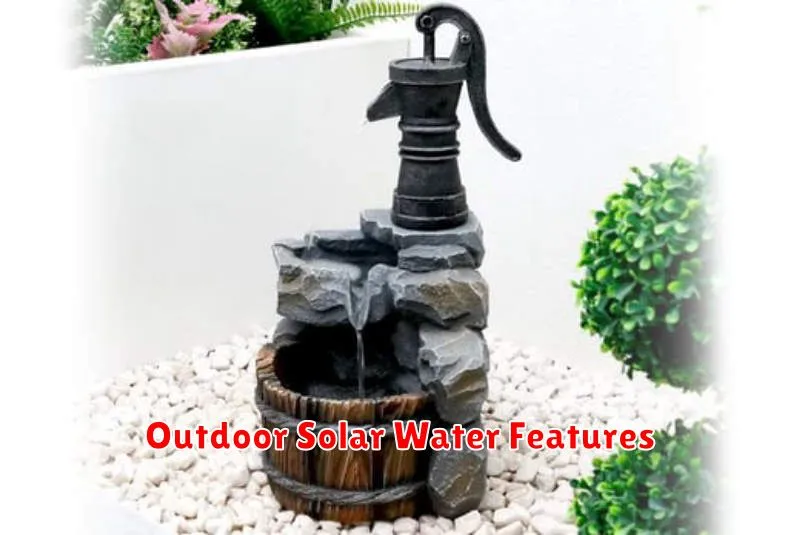
Incorporating outdoor solar water features into your eco-friendly garden design offers a sustainable and visually appealing element. These features, powered by solar energy, minimize reliance on the electrical grid, reducing your carbon footprint. Options range from small, bubbling solar fountains to larger, more elaborate water displays, allowing for customization to suit your garden’s size and style.
The environmental benefits extend beyond reduced energy consumption. The gentle sounds of water can create a serene atmosphere, promoting relaxation and well-being. Furthermore, many solar water features incorporate recirculating systems, minimizing water waste. This makes them a responsible and aesthetically pleasing addition to any eco-conscious landscape.
When selecting a solar water feature, consider factors such as the size and style of your garden, the available sunlight, and your budget. Ensure the chosen model is durable and weather-resistant to withstand various weather conditions. Proper maintenance, including regular cleaning, will ensure the longevity and efficiency of your solar water feature, maximizing its eco-friendly impact.

